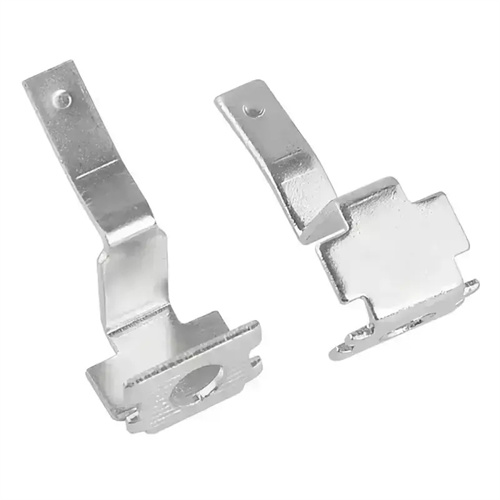Basic concepts of blanking
Blanking is a stamping process that uses a die under the action of a press to separate sheet metal. The basic principle is to apply shear force to the sheet metal through the relative movement of the punch and die. When the shear force exceeds the shear strength of the material, the sheet metal breaks and separates, resulting in a part of the desired shape and size. Blanking offers advantages such as high production efficiency, high material utilization, and good part dimensional consistency. It is widely used in the processing of metal materials and can also be used for processing some non-metallic materials such as cardboard and rubber sheets. Depending on the process purpose and deformation characteristics, blanking can be divided into various forms such as blanking, punching, cutting, trimming, tongue cutting, and sectioning. Blanking and punching are the two most commonly used basic processes.

Blanking is the process of shearing a workpiece with a specific shape from sheet metal. The separated portion is the finished product, while the remaining sheet metal is waste, such as when punching gaskets and washers from steel sheet. Punching is the process of punching a hole of the desired shape into a workpiece. The separated portion is waste, while the remaining portion is the finished product, such as when punching bolt holes in a flange. The mold structures for blanking and punching are essentially the same, the main difference being the design of the punch and die dimensions. For blanking, the die dimensions are equal to the workpiece’s overall dimensions, while the punch dimensions are equal to the die dimensions minus the clearance between the two sides. For punching, the punch dimensions are equal to the hole dimensions, while the die dimensions are equal to the punch dimensions plus the clearance between the two sides. This dimensional design principle is intended to ensure the dimensional accuracy of the blanked part and minimize the impact of die wear on part quality.

The material separation process during blanking progresses through three stages: elastic deformation, plastic deformation, and fracture separation. These three stages proceed continuously and together constitute the basic deformation process of blanking. During the elastic deformation stage, the punch contacts the sheet and begins to press downward. Under the action of the punch and die, the sheet undergoes elastic compression and bending. At this stage, the stress within the material has not yet reached its yield point. If the external force is removed, the sheet returns to its original shape. As the punch continues to press downward, the stress within the material reaches its yield point, and the sheet enters the plastic deformation stage. The sheet undergoes plastic shear deformation near the cutting edge, resulting in significant plastic flow. The punch gradually squeezes into the sheet, while the die cutting edge cuts into the other side of the sheet. When the plastic deformation reaches a certain level and the internal stress exceeds the shear strength, microcracks form near the punch and die cutting edges. These microcracks gradually expand and penetrate the sheet, causing the sheets to separate, entering the fracture separation stage.

The quality of blanking parts mainly includes three aspects: dimensional accuracy, shape accuracy and cross-sectional quality. Dimensional accuracy refers to the deviation between the actual size of the blanking part and the designed size. The smaller the deviation, the higher the dimensional accuracy. Usually, the dimensional accuracy of blanking parts can reach IT8-IT10 level, and precision blanking can reach IT6-IT7 level. Shape accuracy refers to the degree of conformity between the actual shape of the blanking part and the designed shape, mainly including flatness, verticality, etc. Factors affecting shape accuracy mainly include the guiding accuracy of the mold, the flatness of the sheet, and the springback after blanking. Cross-sectional quality is an important indicator of the quality of blanking parts. The blanking section consists of four parts: fillet band, bright band, fracture band and burr. Among them, the width and uniformity of the bright band are the main basis for evaluating the cross-sectional quality. Reasonable blanking clearance and mold edge condition can achieve better cross-sectional quality .

The key equipment in the blanking process includes presses and dies. The press provides power and motion for the blanking process and can be divided into mechanical and hydraulic presses depending on the drive method. Mechanical presses feature fixed stroke, fast punching speed, and high production efficiency, making them suitable for mass production. Hydraulic presses feature adjustable pressure and stroke, stable pressure, and are suitable for blanking thick sheet metal and large parts. Dies are the core tool for implementing the blanking process. Their structural form can be divided into simple dies, progressive dies, and compound dies depending on the production batch, part shape, and precision requirements. Simple dies have a simple structure and can only complete one blanking step in a single stroke, making them suitable for small-batch production. Progressive dies can complete multiple blanking steps in a single stroke, offering high production efficiency and suitable for mass production. Compound dies can complete multiple steps, such as blanking and punching, in a single stroke, achieving high part precision and suitable for medium-batch production with high precision requirements.
